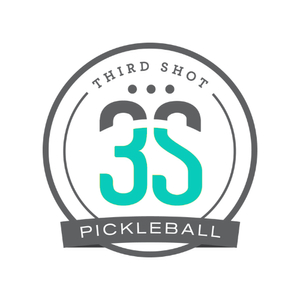We live in a culture that tends to value speed. Implicit in this is that if fast is good, really fast is better. This article is about slowness. In particular, this article is about three situations in which slowing down can benefit your pickleball game. Enjoy (but not too quickly).
Situation 1: Returning Serve
Why do we return serve? The obvious answer is “so we don’t lose the point”. True. But what else do we want from our return? What do we want it to do for us? When you watch the best players it is clear that the return of serve is an approach shot -- it’s the shot you use to get yourself up to the kitchen so you can (hopefully) volley. I often see people hammer the return and run up towards the NVL. The trouble is, the ball gets to their opponents so quickly, by the time their return is hit back to them, they have failed to get to their ideal volleying spot. They just didn’t have enough time. Consequently, they end up having a difficult ball down at their feet and rather than controlling the point, they are defending.
Instead of always playing a fast return, why not play a slow one? A slow arcing ball that lands deep in the court will give you plenty of time to control the net and will still pin your opponent behind the baseline. Will it win you the point? Usually not. But remember, the point of the return isn’t to hit a winning shot; it’s to get to the net so that you can volley effectively. And a nice slow ball can give you the time you need to do that.
Situation 2: Volleying
For many people, volleying can be exciting. They get up to the net, receive the ball in the air and -- sometimes out of a feeling of panic -- slam it back to their opponents. It sounds good. It feels great! The trouble is, if the opponents are at the baseline, this isn’t particularly effective. Because the distance between the hitter and receiver is long, the receiver has a relatively long time to react to the fast ball coming towards her. The volleyer can quickly go from a position of power to one of defense.
A more effective shot in this situation would be a drop volley. If the volleyer can take almost all of the speed off of the ball (soft hands and a continental grip are helpful in this regard) and land the volley in the kitchen, the receiving team will likely have trouble getting to the ball before it’s second bounce. While it might feel good to hit the ball fast, it feels even better to win the point.A slow, short volley can help you to do that.
Situation 3: The 3rd Shot
You serve. Your opponents return and rush the net. Now what? It depends who you ask. Lower level players typically use this as a chance to smack the ball hard at the net team. This works well only if they are weak volleyers. However, the stronger players usually play a more subtle shot. A slower shot that we will call the third shot drop.This shot is slow and low. It is designed to land in the kitchen and prevent the net team from volleying. The third shot drop itself doesn’t usually win the point but it can be useful in taking away the net team’s advantage. Because the net team is receiving a low ball that lands in the kitchen, they have to hit it upwards. And since they are hitting upwards, they must hit it slowly (a fast ball would fly long). The third shot in a rally is incredibly important (so important I named a company after it!). By using the inherently slow third shot drop, the returning team is able to move from a defensive position to a neutral or offensive one. And that’s pretty great.
This article was about three situations in which slow shots can be highly effective. As usual, it would be a mistake to interpret this in absolute terms. I’m NOT saying, never hit the ball hard. No doubt there are good times to do so. What is important is that we begin to understand how to respond intelligently to different situations. At Third Shot Pickleball we take situation training seriously.
Mark Renneson is a pickleball coach and founder of Third Shot Sports. You can reach him by e-mail at mark@thirdshotsports or on twitter @thirdshotsports.
